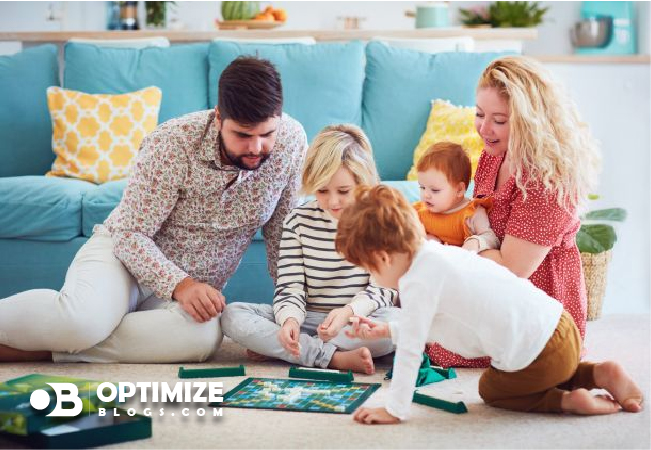
As parents and caregivers, one of our greatest responsibilities is providing an enriching and stimulating home environment for our children. A home that fosters learning, curiosity, and creativity can have a profound impact on a child's development. In this comprehensive guide, we will explore the importance of creating a fun and educational home environment for kids and provide practical tips and ideas to make your home a hub of learning and exploration.
The Importance of an Educational Home Environment
Early Learning Advantage
Children are naturally curious and eager to learn from a young age. A home environment that promotes education and exploration can give them a head start in their educational journey.
Lifelong Love for Learning
Creating a home that encourages learning helps children develop a lifelong love for knowledge and the confidence to pursue their interests.
Bonding and Interaction
An educational home environment fosters meaningful interactions between parents and children. Learning together creates special moments and strengthens family bonds.
Holistic Development
A well-rounded home environment supports the cognitive, emotional, social, and physical development of children.
Practical Tips for an Educational Home Environment
Create a Reading Nook
Designate a cozy corner with shelves of age-appropriate books. Reading together or independently promotes language development and a love for reading.
Learning Through Play
Choose educational toys that encourage problem-solving, creativity, and imagination. Building blocks, puzzles, and art supplies are excellent choices.
Educational Apps and Games
Supplement screen time with educational apps and games that teach various subjects in an engaging way. Ensure screen time is age-appropriate and limited.
Science and Exploration
Set up a simple science corner with magnifying glasses, a microscope, and basic science experiments. Encourage curiosity about the natural world.
Art and Creativity
Provide art materials like crayons, colored pencils, paints, and craft supplies. Let children express themselves through art and creativity.
Music and Instruments
Expose kids to music and musical instruments. Sing songs together, and consider music lessons if they show interest.
Educational Field Trips
Take family outings to museums, zoos, botanical gardens, and historical sites. These trips provide real-world learning experiences.
Educational Videos and Documentaries
Select age-appropriate documentaries and educational videos that explore a wide range of topics. Watch together and discuss what you've learned.
Encourage Questions
Welcome your child's questions and encourage their natural curiosity. Use questions as opportunities for exploration and learning.
Model Lifelong Learning
Demonstrate your own love for learning by sharing your interests and hobbies with your children. Let them see you reading, pursuing hobbies, or taking online courses.
Creating a Learning-Friendly Space
Organize and Declutter
A clutter-free space promotes focus and creativity. Regularly declutter and organize toys and materials.
Use Labels and Visuals
Label toy bins, shelves, and drawers with words and pictures to encourage independence and organization.
Child-Centered Design
Consider child-sized furniture and materials within easy reach. A child-centered space empowers independence.
Display Art and Projects
Showcase your child's artwork and projects on walls or a dedicated display area. It boosts their self-esteem and celebrates their creativity.
Balancing Education and Play
It's essential to strike a balance between education and play. Play is a child's primary way of learning, so ensure there's ample time for free play and exploration without structured learning activities.
Incorporating Learning into Daily Routines
Education doesn't have to be separate from daily life. Integrate learning into routines by discussing interesting topics during meals, exploring math concepts while cooking, or identifying shapes and colors during walks.
Engage in Nature and Outdoors
Encourage outdoor exploration in your yard or local parks. Nature provides countless learning opportunities, from observing plants and insects to discovering animal tracks.
Flexibility and Adaptation
Remember that every child is unique and may have different interests and learning styles. Be flexible and adapt your home environment to accommodate their individual needs and passions.
Conclusion: Nurturing Lifelong Learners
Creating a fun and educational home environment is a gift that keeps on giving. It sets the stage for a lifetime of learning, curiosity, and growth. By incorporating educational elements into your home and daily routines, you're fostering a love for knowledge and providing your children with the tools they need to thrive academically and personally. Remember that learning is an ongoing journey, and the most important aspect is the joy and enthusiasm for discovery that you instill in your children. Embrace the adventure of learning together and watch your child's potential unfold.






